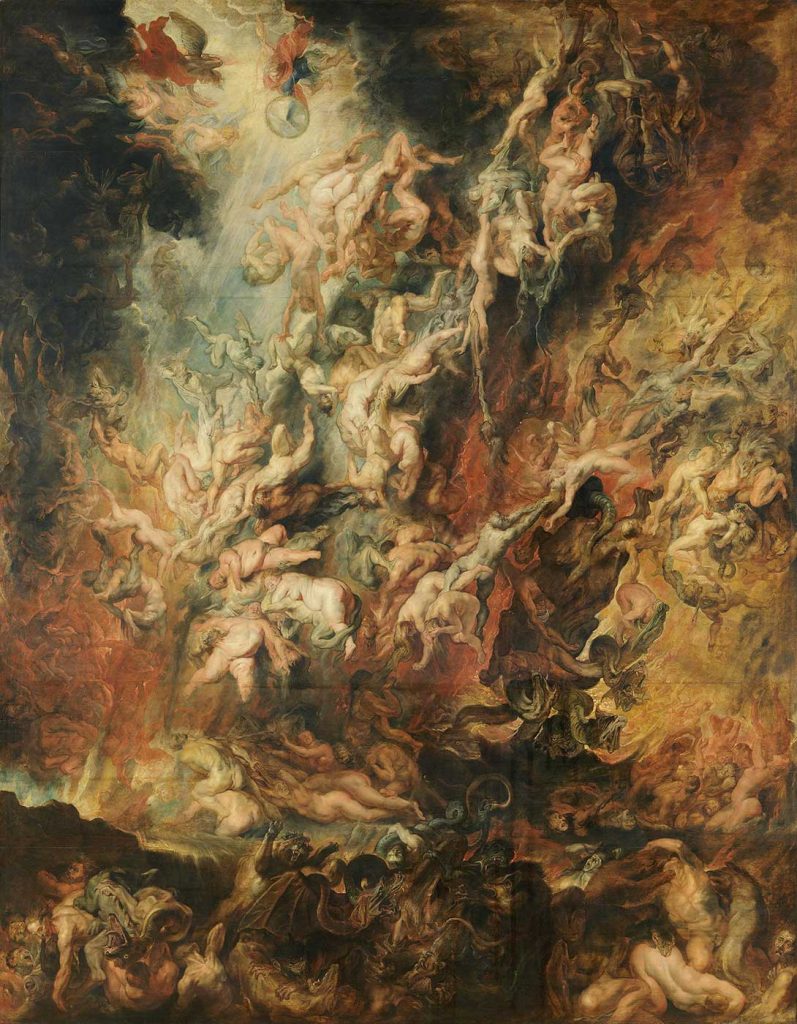
The Fall of the Damned by Peter Paul Rubens was created in 1620. The painting is in Alte Pinakothek München. The size of the work is 286 x 224 cm and is made of oil on wood.
About the Work
Unlike other depictions of the Last Judgement, Rubens concentrates soley here on the Fall and renders this in a monumental format. Horror and the inescapability of the event are captured in a masterly style. Sinners, devil-like figures, and demoniacal hybrid creatures are condensed to form a diagonal that turns into a swirling mass. It renders the powerful pull of Hell’s fire visible, as described in the Gospel of St. Matthew (25:41). It does not require much fantasy to imagine the screams of horror coming from the damned and the infernal noise.
About the Artist
Sir Peter Paul Rubens (28 June 1577 – 30 May 1640) was a Flemish artist and diplomat. He is considered the most influential artist of the Flemish Baroque tradition. Rubens’ highly charged compositions reference erudite aspects of classical and Christian history. His unique and immensely popular Baroque style emphasised movement, colour, and sensuality, which followed the immediate, dramatic artistic style promoted in the Counter-Reformation. Rubens was a painter producing altarpieces, portraits, landscapes, and history paintings of mythological and allegorical subjects. He was also a prolific designer of cartoons for the Flemish tapestry workshops and of frontispieces for the publishers in Antwerp.
Rubens was born and raised in the Holy Roman Empire (modern-day Germany) to parents who were refugees from Antwerp in the Duchy of Brabant in the Southern Netherlands (modern-day Belgium) and moved to Antwerp at about 12. In addition to running a large workshop in Antwerp that produced paintings popular with nobility and art collectors throughout Europe, Rubens was a classically educated humanist scholar and diplomat who was knighted by both Philip IV of Spain and Charles I of England. Rubens was a prolific artist. The catalogue of his works by Michael Jaffé lists 1,403 pieces, excluding numerous copies made in his workshop. Read more in Wikipedia
Order a reproduction of this work (printed on canvas)
